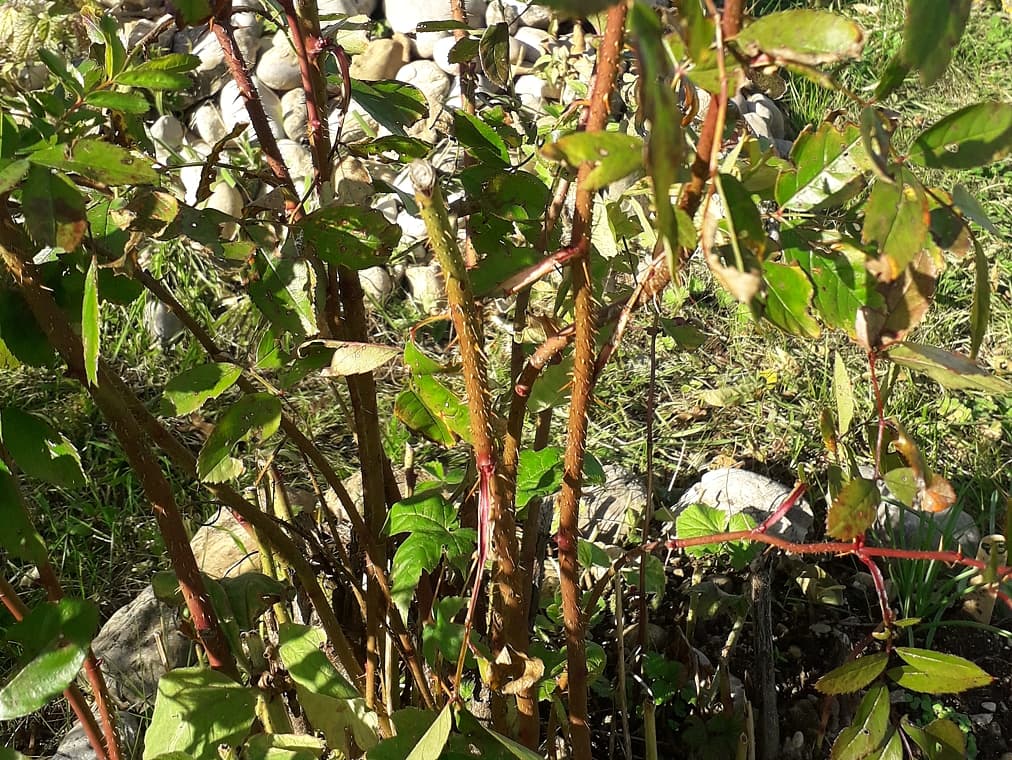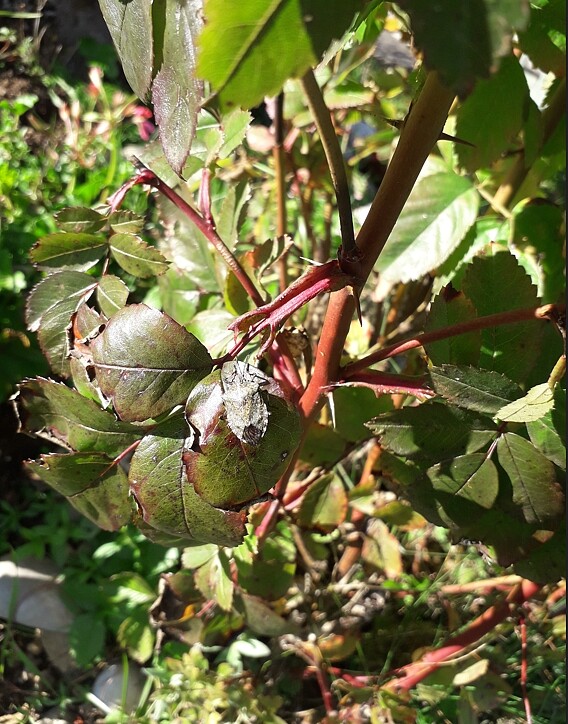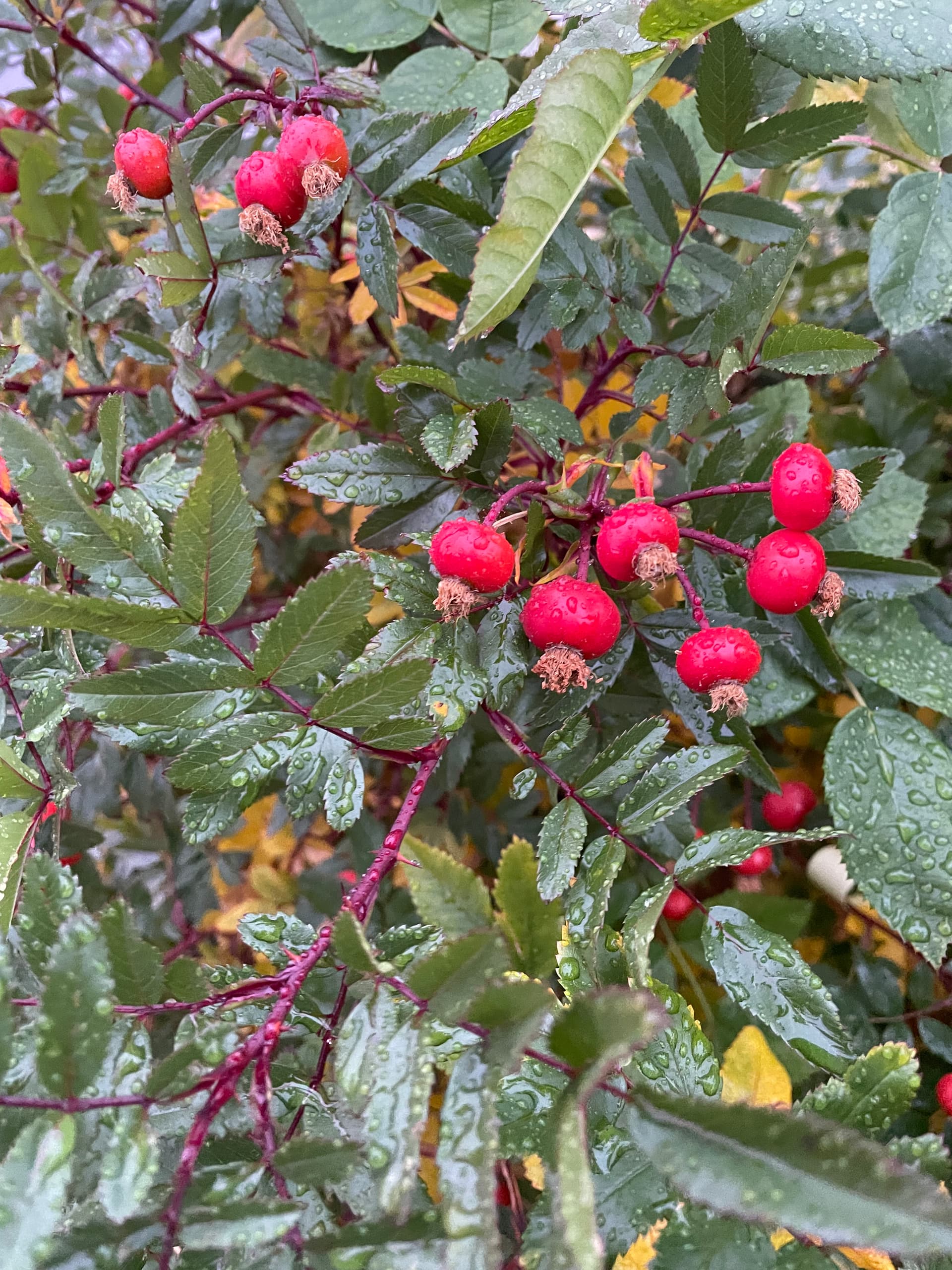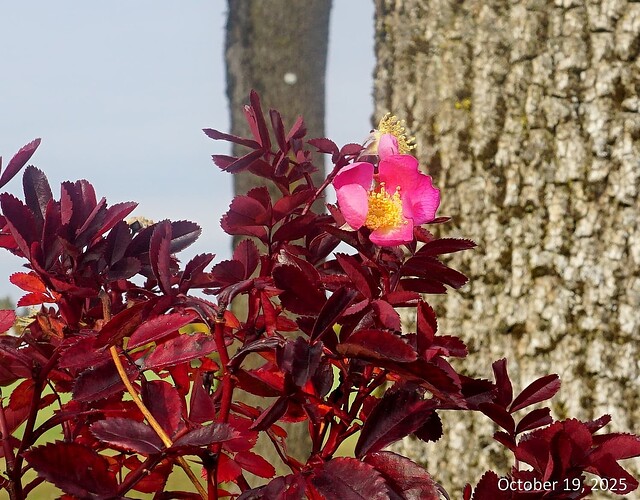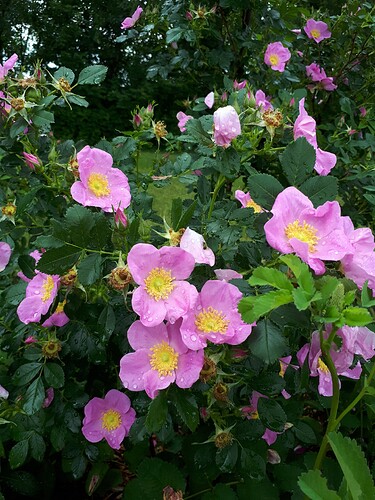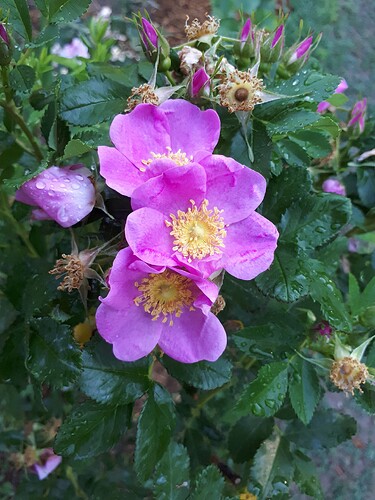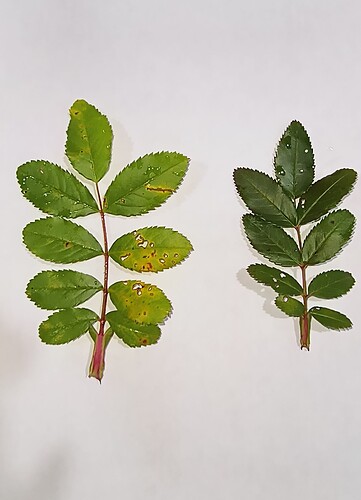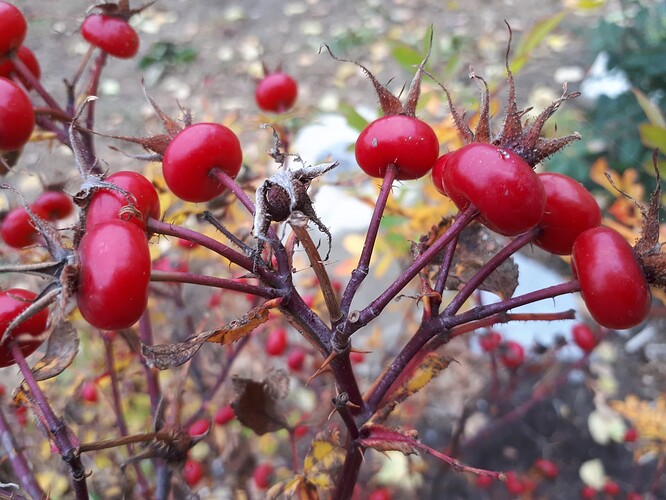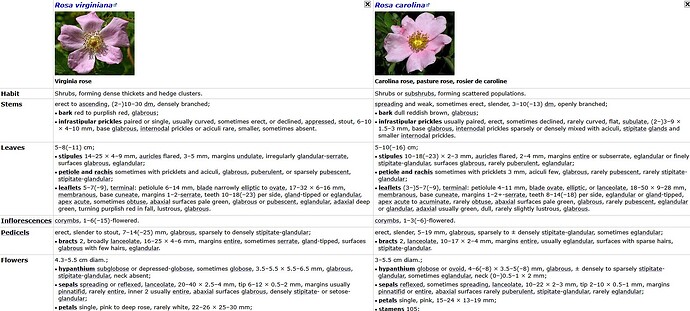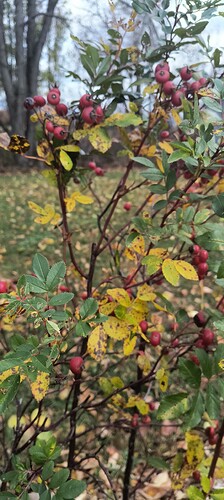Hello Dee_S,
thank you for your input to this interesting matter! Of course, it is possible that the species rose shown from me is not R. virginiana. But I based my attempt at identification on search through extensive literature as well on our forum knowing fully well that these North American Species are part of an species complex. It is sure, that these two very similar looking roses, R. virginiana and R.carolina, are often confused and thus also go on sale.
Nevertheless, I have often found the information, also stating that the leaves of Rosa virginiana are turning purplish red in fall (see screenshot and link below). Other sources are stating, while both Rosa virginiana and Rosa carolina have relatively glossy leaves, Rosa virginiana leaves are generally described as being glossier than Rosa carolina. In my case, both apply.
The main problem seems to be for me that, as to my knowledge, there is no holotype for the respective species available. I’m therefore unclear of the distinctive traits each rose represents in the condition originally described, which basically makes it rather difficult to determine the primal distinguishing attributes between them. In addition, these types are propagated via seed implying that varietal purity cannot be guaranteed. It could be a genetical mix.
At my first glance, there are a total of four roses on the site, spaced at a certain distance from each other. However, upon closer inspection, one rose shows some differences, as for example, its foliage is not as red and fiery in autumn, it has smaller rose hips, rounder leaves, less shiny foliage, larger corymbs, less scent of blooms etc.
The lady who once bought and planted all four species roses unfortunately could not remember their names, but she was sure that they all had the same variety name.
These are my observations and research so far. What do you think?

